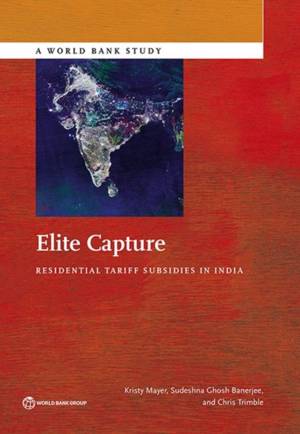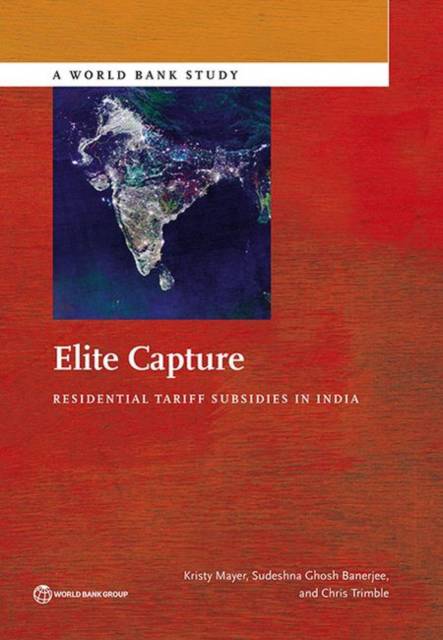
- Retrait gratuit dans votre magasin Club
- 7.000.000 titres dans notre catalogue
- Payer en toute sécurité
- Toujours un magasin près de chez vous
- Retrait gratuit dans votre magasin Club
- 7.000.0000 titres dans notre catalogue
- Payer en toute sécurité
- Toujours un magasin près de chez vous
Elite Capture
subsidizing electricity use by Indian households
Kristy Mayer, Sudeshna Banerjee, Christopher Trimble
42,45 €
+ 84 points
Description
"India is home to one of the world's largest populations without electricity access. Traditionally, the Government of India has extended rural electrification using two instruments: consumption subsidies and free connections to households below the poverty line (BPL). This study centers on subsidies for electricity consumption, examine their size, frequency, and distribution to households. It uses poverty as a lens through which to focus more closely on these concepts, asking such questions as how well subsidies are targeted to BPL households. The study findings demonstrate that subsidies cover 87 percent of all electricity consumed by India's households. Furthermore, residential subsidies are large compared to the cost of electricity and the small cross-subsidy amounts taken from non-subsidized residential consumption. Moreover, the vast majority of electrified households receive a net subsidy on their electricity consumption. About 87 percent of subsidy payments go to households living above the poverty line (ABL) instead of to the poor, and over half of subsidy payments go to the richest 40 percent of households. The key factor driving this outcome is tariff design. Only some states have highly concessional BPL tariffs. In most states, tariffs for the non-poor are subsidized nearly as much as BPL tariffs. Because non-poor households consume significantly more electricity than poor households, they are eligible for significantly higher subsidies. Owing to the relatively low access rate among poorer households, many of them are unable to take advantage of tariff subsidies."
Spécifications
Parties prenantes
- Auteur(s) :
- Editeur:
Contenu
- Nombre de pages :
- 104
- Langue:
- Anglais
- Collection :
Caractéristiques
- EAN:
- 9781464804120
- Date de parution :
- 17-11-14
- Format:
- Livre broché
- Format numérique:
- Trade paperback (VS)
- Dimensions :
- 178 mm x 254 mm
- Poids :
- 199 g

Les avis
Nous publions uniquement les avis qui respectent les conditions requises. Consultez nos conditions pour les avis.






